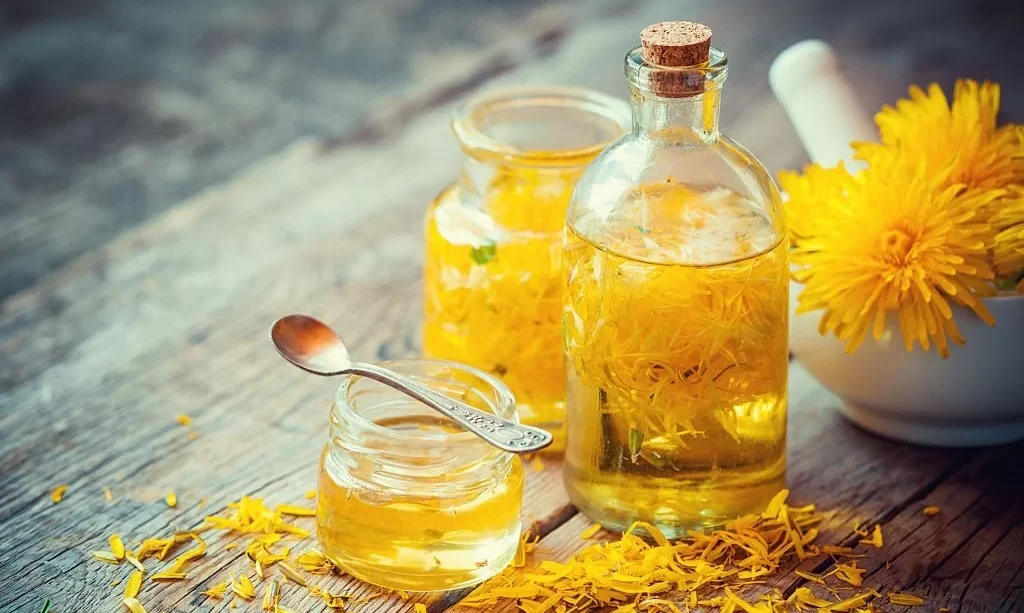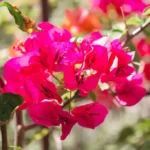In the realm of herbal remedies, dandelions (Taraxacum officinale) are often underestimated treasures. These bright yellow flowers, commonly considered as weeds, possess a wealth of health benefits when harnessed thoughtfully. One powerful way to unlock their potential is by crafting a dandelion tincture, a concentrated herbal elixir that can offer wellness support in various ways.
This article will guide you through the art of making your own dandelion tincture at home. We will explore the meticulous process of gathering dandelion roots and leaves, as well as the crucial steps of cleaning and preparing these botanical wonders. By the end of this journey, you’ll be well on your way to crafting a herbal remedy that can promote digestive health, liver function, and overall vitality.
- ✅ ASSIST YOUR IMMUNITY – Brace yourself against contaminants and stay in shape! Our dandelion tincture drops have compounds that may help fend off foreign invaders and keep your immune system robust.
- ✅ PRIORITIZE YOUR WELLNESS – Taraxacum officinale is known for its diuretic effect. It may help you eliminate excess liquid in your body.
- ✅ LOADED WITH NUTRIENTS – Dandelion root is rich in fiber, calcium, potassium, magnesium, and Vitamins A, C, E, and K. These are all concentrated in our easy-to-consume dandelion liquid extract.
- ✅ QUALITY YOU CAN TRUST – Purchase this dandelion supplement without risk! We make our dandelion root extract on US soil and abide by all necessary and industry-leading standards and practices.
Gathering Dandelion Roots and Leaves
The first step in creating a dandelion tincture is to gather the primary ingredients: dandelion roots and leaves. Here’s what you need to know:
- Timing Matters: Optimal harvest times for dandelion roots are in the late fall or early spring when the plant’s energy has retreated to the roots. For leaves, the best time is in the early spring before the plant flowers, as the leaves are more tender and less bitter.
- Ethical Foraging: When foraging for dandelions, prioritize ethical practices. Harvest only from areas free of pesticides, herbicides, or other contaminants. Seek permission if you plan to harvest on private property.
- Identification: Ensure you correctly identify dandelions, as there are look-alike plants. Genuine dandelions have distinctive serrated leaves and iconic yellow flowers. When in doubt, consult a field guide or an experienced forager.
Cleaning and Preparing Dandelion Parts
Once you’ve gathered your dandelion roots and leaves, meticulous cleaning and preparation are essential:
- Thorough Cleaning: Begin by carefully washing the roots and leaves under cold running water. Remove any dirt, debris, or insects clinging to the plant material. A soft-bristle brush can be helpful for scrubbing the roots.
- Drying the Harvest: After cleaning, it’s crucial to dry the dandelion roots and leaves thoroughly. Excess moisture can lead to mold in your tincture. You can air-dry them by spreading them out on a clean, dry surface or use a food dehydrator set to a low temperature.
- Ensure Complete Dryness: Ensure that the plant material is entirely dry before moving on to the tincture-making process. Any residual moisture can compromise the quality and shelf life of your tincture.
With your dandelion roots and leaves cleaned and prepared, you’re ready to embark on the next steps of creating a potent dandelion tincture. In the following sections, we’ll explore the tincture-making process, including choosing the right alcohol base and the essential steps for crafting a dandelion elixir that can be a valuable addition to your herbal wellness toolkit.
Choosing Your Alcohol Base
The choice of alcohol to serve as the solvent for your dandelion tincture is a crucial decision in the tincture-making process. Here’s what you need to consider:
- Alcohol Selection: Common choices for the alcohol base include high-proof vodka, brandy, rum, or grain alcohol. The alcohol’s purpose is to extract the beneficial compounds from the dandelion roots and leaves. The alcohol you select should have a high alcohol content (at least 40% alcohol by volume) for efficient extraction.
- Flavor Profile: Consider the flavor profile of the alcohol you choose, as it will influence the taste of your tincture. Vodka is a neutral option that won’t significantly alter the tincture’s flavor, while brandy or rum can impart a pleasant complexity.
- Quality Matters: Opt for high-quality, pure alcohol without added flavors or additives. Avoid denatured alcohol or rubbing alcohol, as they are not suitable for consumption.
- Organic and Sustainable: Whenever possible, choose organic alcohol options to align with the natural and sustainable approach of herbal medicine.
The Tincture Making Process
Creating a dandelion tincture involves several crucial steps. Here’s an overview of the tincture-making process:
- Chop or Grind: Begin by chopping or grinding the dried dandelion roots and leaves into smaller pieces. Increased surface area aids in the extraction process, allowing the alcohol to penetrate the plant material more effectively.
- Combining Plant Material and Alcohol: Place the chopped or ground dandelion roots and leaves into a clean glass jar. Pour your chosen alcohol over the plant material, ensuring it’s fully submerged. Seal the jar tightly with a lid.
- Extraction Period: Store the sealed jar in a cool, dark place, such as a cupboard or pantry. Allow the mixture to steep for several weeks to extract the medicinal compounds from the dandelion. During this time, shake the jar daily to facilitate thorough mixing and extraction.
- Straining: After the extraction period (usually around 4-6 weeks), strain the liquid tincture from the solid plant material. Use a fine mesh strainer, cheesecloth, or a specialized tincture press to separate the tincture. Squeeze or press the plant material to extract as much liquid as possible.
Straining and Bottling
Proper straining and bottling ensure your dandelion tincture is ready for use:
- Straining the Tincture: When straining, it’s important to work in a clean, dry area. Use a funnel to pour the liquid tincture into amber glass bottles. Amber glass protects the tincture from light exposure, which can degrade its potency.
- Labeling: Label each bottle with the contents (dandelion tincture), the date of preparation, and any specific usage instructions or dosage recommendations. Proper labeling helps you keep track of the tincture’s shelf life and usage.
- Storage: Store your dandelion tincture bottles in a cool, dark place, away from direct sunlight and extreme temperatures. When stored correctly, dandelion tinctures can remain potent for several years.
With your dandelion tincture now prepared, strained, and safely bottled, you’re one step closer to experiencing the herbal benefits of this botanical elixir. In the following sections, we’ll explore dosage recommendations, storage, and various ways to incorporate your homemade dandelion tincture into your daily wellness routine.
Dosage and Usage
Understanding the proper dosage and usage of your homemade dandelion tincture is essential for experiencing its potential benefits safely and effectively. Here’s what you need to know:
- General Dosage: A typical dosage for dandelion tincture is about 30-60 drops (1-2 droppers full) taken 2-3 times a day. However, individual responses can vary, so it’s advisable to start with a lower dose and gradually increase it as needed.
- Dilution: You can dilute the tincture in a small amount of water or herbal tea before consumption if the taste is too intense for you. This can make it more palatable while still providing the desired benefits.
- Consultation: If you are new to herbal remedies or have specific health concerns, it’s wise to consult with a healthcare professional or herbalist for personalized dosage recommendations.
- Duration: Depending on your wellness goals, you may take dandelion tincture daily for several weeks or as needed. Some individuals incorporate it into their regular health routine for ongoing support.
Storage and Shelf Life
Proper storage is crucial for maintaining the potency and quality of your dandelion tincture:
- Cool and Dark: Store your amber glass bottles in a cool, dark place, away from direct sunlight and extreme temperatures. This helps preserve the tincture’s medicinal properties.
- Shelf Life: Dandelion tinctures typically have a shelf life of several years when stored correctly. However, it’s a good practice to periodically assess the tincture’s aroma, flavor, and color. If you notice significant changes, such as a strong alcohol smell or an off taste, it may be time to prepare a fresh batch.
- Labeling: Keep your tincture bottles well-labeled with the preparation date and any specific usage instructions. This ensures you can easily track the tincture’s age and maintain its quality.
Conclusion
Crafting your own dandelion tincture is not only a rewarding and cost-effective endeavor but also an invitation to explore the world of herbal wellness. Dandelions, often dismissed as common weeds, hold a wealth of potential health benefits, from aiding digestion to supporting liver function.
As you embark on your journey with dandelion tincture, remember that patience and consistency are key. Listen to your body’s responses, and don’t hesitate to seek guidance from healthcare professionals or herbal experts if needed.
By harnessing the power of dandelions and creating your herbal elixir, you have taken a step toward greater self-sufficiency in holistic wellness. May your dandelion tincture serve as a valuable addition to your herbal toolkit, promoting vitality and well-being in your daily life.





